Background
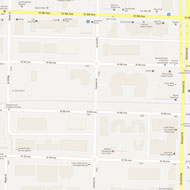
The Canadian Pacific Railway (CPR) has been using the land along the Arbutus Corridor for over 100 years. After the rail operation ceased in 2002, the CPR tried to redevelop the corridor for commercial and residential use. However, this plan was stopped because of a strong public support for corridor preservation for future commuter rail use and/or recreational uses. In 2006 the City adopted an Official Development Plan bylaw to designate the corridor as a public thoroughfare for transportation.
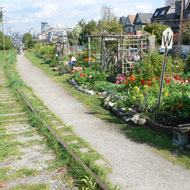
There are currently two community gardens located along the Arbutus Corridor. The Maple Street Community Garden is located on the north side of 6th Avenue between Maple Street and Cypress Street. The Cypress Community Garden is located between Cypress Street and Burrard Street. Each garden sits on a one-block long city property. There is an approximately 32-foot wide two-way road, including parking lanes in each direction, on the south side of the gardens. A walking path along the old railway runs along the north side of the gardens. At the corner of Maple Street and 6th Avenue, the Vancouver Compost Demonstration Garden teaches the public about backyard and worm composting, water conservation (e.g., rain barrels, drip irrigation, permeable surfaces), safe pest control and natural lawn care.
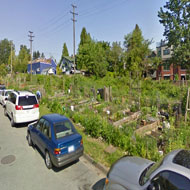
The Maple Street Community Garden consists of 75 plots, which are 3 feet by 12 feet or 4 feet by 5 feet. The plots cost $45 and $55 for the first year depending on size, $25 for the second year, and $10 for all years thereafter (Green Living Enterprises). This is an organic garden and no pesticides or chemicals are used. The combination of hot, rainy summers and good soil in the Maple Street Community Garden has produce an excellent array of fresh vegetables, such as tomatoes, peppers, corn, sweet potatoes, melons, pumpkins and potatoes. The fourteen community gardeners at the site come from all ages and walks of life, and everybody is eager to share the fruits and vegetables (Creces 2010).
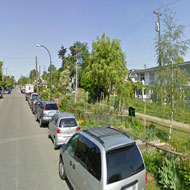
The Cypress Street Community Garden consists of 73 plots which are open to Vancouver residents only. Each plot is approximately 3 feet by 12 feet with an annual membership fee of $30. This fee pays for metered water, maintenance of fences and the water system, tools, association membership(s) and other related expenses. There are water taps and hoses for each section of the garden. Members have access to garden tools on a first-come, first-served system. This is also an organic garden with no chemical fertilizers or pesticides permitted. Compost and organic fertilizers only are used to amend the soil.
Two garden clean-up parties and section work parties are held each season to maintain the common areas of the garden. Members are expected to participate in three garden clean-up parties (two general, one section) each year. In addition, community garden members should be prepared to volunteer some extra time to the garden, such as taking minutes at meetings, doing additional garden maintenance or improvements, and working on special projects.
There is growing demand for plots. The plots in the Cypress Community Garden are all registered this year (Cypress Community Garden). The members are seeking additional public green spaces to increase the number of plots and community gardens in the neighborhood (City Farmer TV 2007).
Adopted from: Cypress Community Garden
Lessons Learned
Potential Benefits:
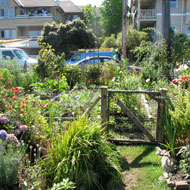
- Utilizes the abandoned railway right-of-way.
- Provides better food access to the community.
- Increases livability and vitality of the street and the surrounding neighborhood.
- Provides wheelchair access to the community garden. In the Maple Street Community Garden, there are three raised planting beds and ramp access to the garden for wheelchair users.
- Demonstrates how edible landscaping can be applied to other residual public rights-of-way, such as infrastructure corridors, wide sidewalks, etc.
Potential Issues:
- Demand: It is difficult to meet demand for community gardens. The overall popularity of the Arbutus Corridor Community Gardens and increasing number of new multi-family housing in the neighborhood are leading to additional demand (Wintonyk 2011).
- Real estate value: The increasingly high value of city real estate threatens the survival of the community gardens. However, being part of the street environment and public right-of-way has minimized the danger of redevelopment (Wintonyk 2011).
- Planting restrictions: Some plant types must be restricted due to problems with disease or invasiveness.